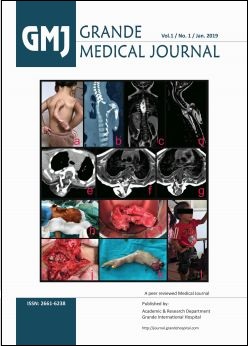Neuroendoscopic lavage and continuous drainage of ventricles: Treatment of pyocephalus in a newborn
DOI:
https://doi.org/10.3126/gmj.v1i1.22415Keywords:
Neuroendoscopic levage, pyocephalus, newborn, ventriculitis, ventricular empyemaAbstract
Pyocephalus/Cerebral ventricular empyema is a serious life threatening complication of acute pyogenic meningitis. The primary treatment of ventriculitis is administration of antibiotics. With recent advances, neuroendoscopic lavage (NEL) of ventricles through direct visualization has helped save lives when multipronged approaches including intravenous (IV) antibiotics, intrathecal antibiotics and continuous drainage of cerebrospinal fluid (CSF) fails.
We report a case of a 23-day old neonate who developed pyocephalus as a complication of pyogenic meningitis. He did not respond favorably to initial IV antibiotic treatment for two weeks. NEL of ventricles was performed. Thick pus/flakes inside the ventricles had caused obstructive hydrocephalus. Continuous CSF drainage was done through strategically placed multiple external ventricular drains. Interval ventriculo-peritoneal shunt was done bilaterally after the CSF was macroscopically/ microscopically clear of visible debris, and sterile. Microbiological and clinical cure was achieved and the child survived and is thriving well at last follow-up at the age of 6 months.
Downloads
Downloads
Published
How to Cite
Issue
Section
License




